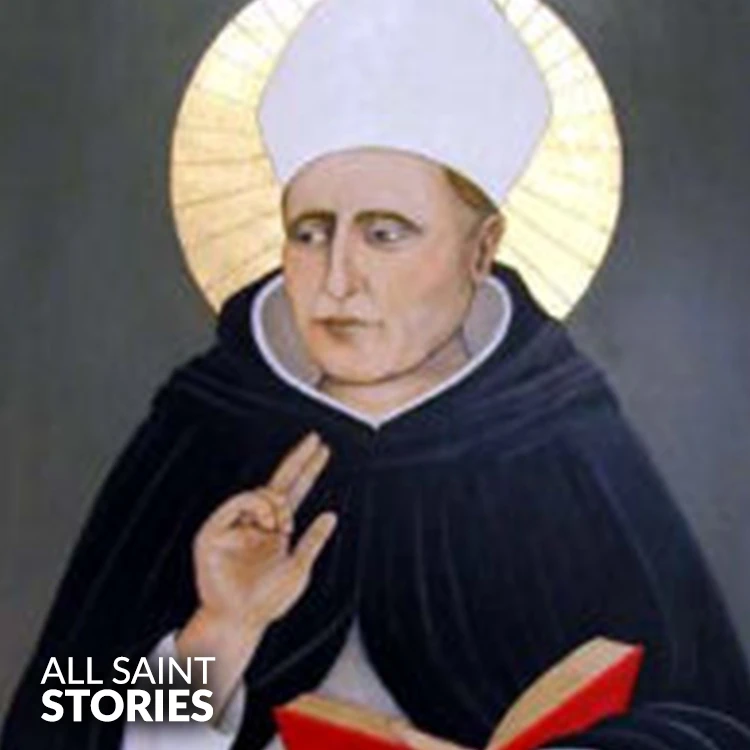St. Albert the Great, wise and holy scholar, You dedicated your life to the pursuit of knowledge and truth. Help me to seek wisdom in all things, To grow in faith, understanding, and love of God. Guide me to use my gifts for the service of others, And to walk humbly in the light of Christ. Pray for me, that I may follow your example, And live a life of holiness and devotion. Amen.
ST. ALBERT THE GREAT (BISHOP, PHILOSOPHER)
ST. ALBERT THE GREAT (BISHOP, PHILOSOPHER)

St. Albert the Great was a 13th-century bishop, philosopher, and scientist known for his vast contributions to theology and natural sciences. A Dominican friar, he taught St. Thomas Aquinas and was one of the most learned men of his time. His writings covered a wide range of topics, from theology to botany and physics. He was canonized in 1931 and later declared a Doctor of the Church for his immense intellectual legacy.
St. Albert the Great, also known as Albertus Magnus, was born around 1200 in Lauingen, Germany. He became a Dominican friar and studied at the University of Padua, where he first displayed his brilliance in various fields of knowledge. He later taught at the University of Paris and was a key figure in integrating Aristotelian philosophy with Christian theology, paving the way for Scholasticism. His most famous student, St. Thomas Aquinas, greatly benefited from Albert’s teachings.
Albert was known for his insatiable curiosity and scientific inquiry. He wrote extensively on a variety of subjects, including physics, biology, chemistry, astronomy, and philosophy. His detailed observations of nature earned him the title of "Doctor Universalis." Unlike many of his contemporaries, Albert saw no conflict between faith and reason. Instead, he argued that studying creation was a way to understand God’s wisdom.
In 1260, Albert was appointed bishop of Regensburg, but he resigned after only a few years, preferring a life of study and teaching. He continued to advise popes and scholars and worked tirelessly to reconcile philosophical thought with Christian doctrine. His influence shaped medieval theology and scientific thought for centuries.
Albert died on November 15, 1280, in Cologne, Germany. He was beatified in 1622 and canonized by Pope Pius XI in 1931. That same year, he was declared a Doctor of the Church, recognizing his extraordinary contributions to Christian philosophy and science. Today, he is honored as the patron saint of scientists, philosophers, and students of the natural sciences.
Video Not Found
The information on this website is compiled from various trusted sources. While we aim for accuracy, some details may be incomplete or contain discrepancies.
If you notice any errors or have additional information about this saint, please use the form on the left to share your suggestions. Your input helps us improve and maintain reliable content for everyone.
All submissions are reviewed carefully, and your personal details will remain confidential. Thank you for contributing to the accuracy and value of this resource.
Credits & Acknowledgments
- Anudina Visudhar (Malayalam) – Life of Saints for Everyday
by Msgr. Thomas Moothedan, M.A., D.D. - Saint Companions for Each Day
by A. J. M. Mausolfe & J. K. Mausolfe - US Catholic (Faith in Real Life) – Informational articles
- Wikipedia – General reference content and images
- Anastpaul.com – Saint images and reflections
- Pravachaka Sabdam (Malayalam) – Saint-related content and insights
We sincerely thank these authors and platforms for their valuable contributions. If we have unintentionally missed any attribution, please notify us, and we will make the correction promptly.
If you have any suggestion about ST. ALBERT THE GREAT (BISHOP, PHILOSOPHER)
Your suggestion will help improve the information about this saint. Your details will not be disclosed anywhere.
© 2025 Copyright @ www.allsaintstories.com




 English
English
 Italian
Italian
 French
French
 Spanish
Spanish
 Malayalam
Malayalam
 Russian
Russian
 Korean
Korean
 Sinhala
Sinhala
 Japanese
Japanese
 Arabic
Arabic
 Portuguese
Portuguese
 Bantu
Bantu
 Greek
Greek
 German
German
 Dutch
Dutch
 Filipino
Filipino